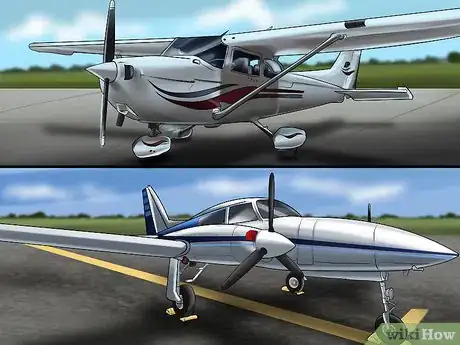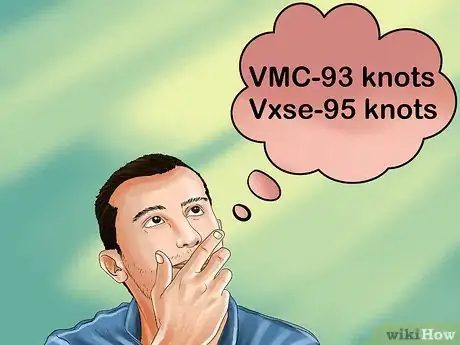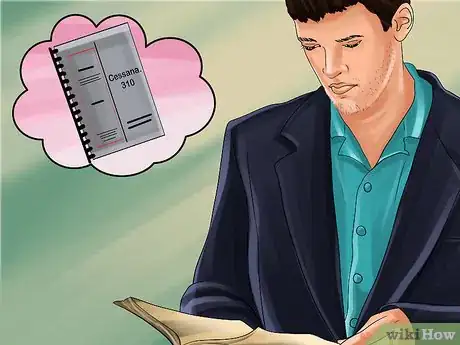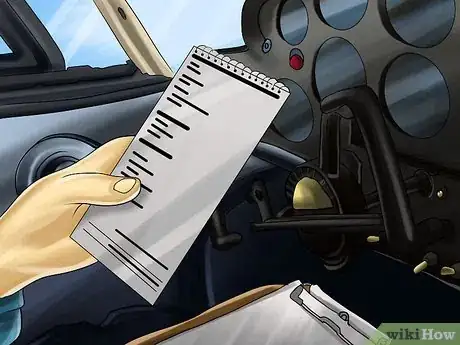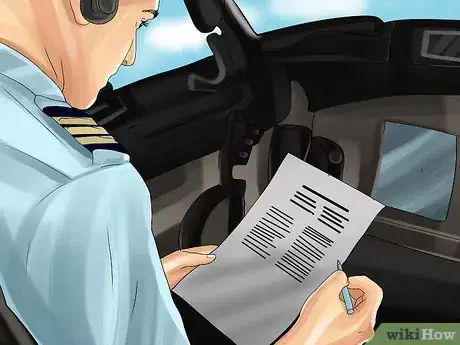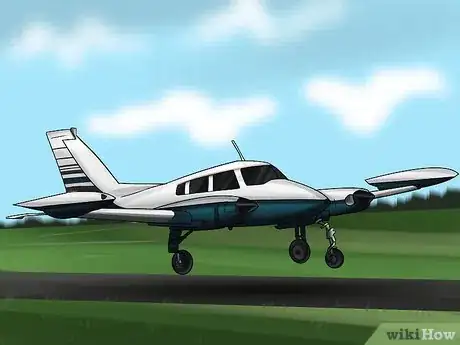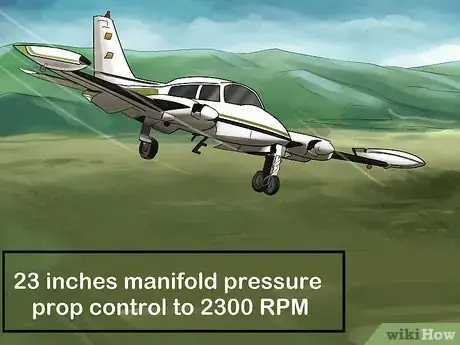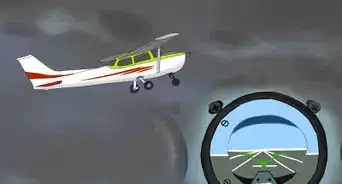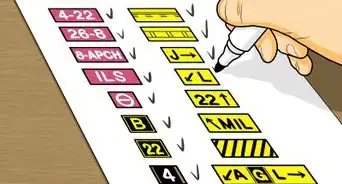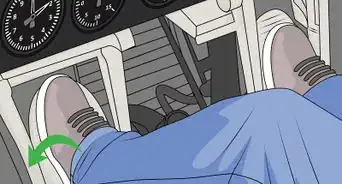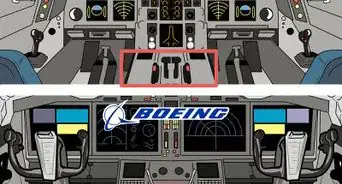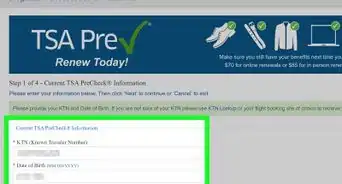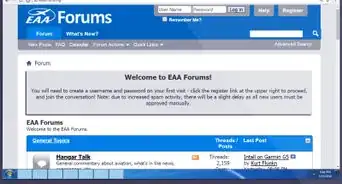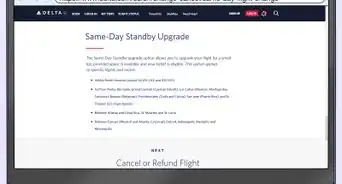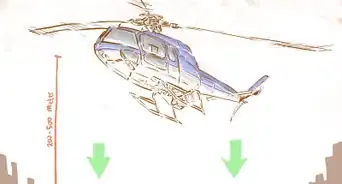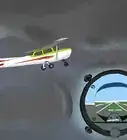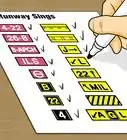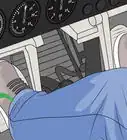This article was co-authored by Javier Diaz. Javier Diaz is an Entrepreneur & Stunt Helicopter Pilot, and owner of Wings Air Helicopters LLC. With over 20 years of flying experience, his company specializes in helicopter charters, tours, flight training, and aerial film production. He earned his BS from the United States Merchant Marine Academy and is a member of the Screen Actors Guild (SAG). As a Stunt Pilot, Javier has many major film credits, including several blockbuster films.
This article has been viewed 29,914 times.
Now that you have mastered the single engine aircraft, it's time to advance and get your Multi Engine Rating. The following steps should provide enough information to help you pass your Multiengine exam, flight test, and get your Multiengine Certificate. These steps provide a realistic and achievable guide.This article focuses on taking you through all the basics of the instruments in a Cessna 310, one of the most common light twin aircraft, to be illustrative of all similar types of aircraft.
If you would rather begin by flying the Cessna 172 single engine plane, visit Fly a Cessna.
Steps
Getting to Know the Multiengine Cessna
-
1Learn the differences between the Cessna 172 and the Cessna 310. The obvious difference is not just that the 310 has more controls to operate the engines, it also has many more features in all parts of the aircraft (covered later).
- A first glance inside the cockpit at the 310 panel will reveal many more instruments and controls, and more modern ones.
-
2Get to know the additional instruments added to the 310 instrument panel:
- Two tachometers
- Two manifold pressure gauges
- Two sets of engine temperature and pressure gauges.
Advertisement -
3Notice the center Pedestal with dual controls.
-
4Become familiar with the added controls in the 310.
- The most noticeable difference, for this article, is in the Dual Control Pedestal.
- The controls from left to right are:
- Two throttles.
- Two propeller controls.
- Two fuel mixture controls.
- Two fuel tank controls. Under the pedestal.
-
5Learn the Twin Panel differences.
- This panel has the newer "Glass Panel" which has all the instrumentation of the six pack panel, but concentrated into one glass panel, in a different format where airspeed and altitude are in vertical bar displays.
- Note that three round gauges below the glass panel, were kept for backup. In case of glass panel failure.
- Airspeed Indicator.
- Artificial Horizon.
- Altimeter.
-
6Remember the three critical speeds. There are a few more critical speeds to worry about in a Twin. Memorize these speeds, you are sure to be asked about them in the oral test. These speeds vary with each aircraft, check in the manual of your aircraft.
- VMC-93 knots. Minimum control speed. The airspeed, below which, the aircraft cannot be controlled, in flight with one engine out.
- Vyse-106 knots. Best-Rate-of-Climb. The speed giving the best climb on one engine.
- Vxse-95 knots. Best-Angle-of-Climb. The speed giving the best climb to clear a 50 feet (15.2 m) airport departure obstacle on one engine.
-
7Understand the FAA Multiengine Rating requirements. Some of the FAA requirements are as follows: (Have your instructor show you the current list).
- You must currently hold at least a single engine pilot's certificate.
- Must have a minimum of 10 hours of flight time, with an FAA qualified Flight Instructor, in a twin engine aircraft.
- Must have made at least 5 take-offs and landings in the last 90 days, in a twin.
- Sufficient training to master flight with one engine shut down.
- Ground training in performing a more complicated pre-flight walk-around.
- Know all the special speed, and other requirements with operation on both engines, and with one engine off.
- Pass an oral exam with an FAA Inspector in all the items above.
- Pass a flight check, with an FAA inspector, demonstrating all of the above.
-
8Become familiar with the walk-around. The walk-around is more complex on a twin. The following is an example of most check items, use the checklist from your aircraft manual.
- Remove all control locks, internal and external, if installed.
- Check condition of elevator, rudder, trim tabs, hinge bolts and actuator rods.
- Check static pressure holes for obstruction.
- Check baggage compartment and door.
- Check ailerons in same manor as elevator.
- Check Main and auxiliary fuel tank filler caps are secure.
- Check landing gear for damage.
- Check engine oil. Minimum 9 US quarts (9,000 ml), full 12 quarts.
- Drain some fuel from strainer and check for water or contamination.
- Check Main landing gear, tire, and gear door secure.
- Check propeller and spinner for nicks or scratches.
- Check oil filler cap.
- Check cowl doors secure.
- Check nose gear.
- Check pitot tube for obstruction.
- Check taxi light.
- Be sure to perform the same checks both sides of aircraft.
- Remove tie-downs.
Preparing for Take-Off
-
1Perform Before Takeoff checklist. (Use your aircraft check list).
- Landing gear switch in down position. (Before turning power on).
- Elevator and aileron trimmed for takeoff.
- Check throttle friction knobs for proper friction.
- Set mixture to full rich.
- Prop controls to full forward.
- Set flaps at recommend position, some use 10 degrees. Check your manual. (Do not confuse flap switch with landing gear switch).
- Fuel selector valves set to main tank.
- Carburetor heat, to cold (Full forward).
- Check fuel gauges for sufficient fuel.
- Boost pumps on.
- Controls free and movement correct.
- Cowl flaps open.
-
2Check your fuel. The following procedures are just an approximation of what to expect your instructor may show you, but not as an exact procedure for following without an instructor.[[
- Check all 4 fuel gauges for full tank, if appropriate.
- The 310 has 4 fuel tanks, two 50 gal. wing tip tanks and two 15 gallon (56.8 L). aux tanks, giving you a possible range of 1000 miles.
- The total fuel weight is 1170 lbs. so beware of over loading the aircraft. You may have to leave some fuel behind.
-
3Start engines (if in a clear area). Follow your aircraft manual.
- Start the left engine first since the battery is located there.
- Start the right engine.
- Check both engine instruments in the green.
- Altimeter set to field elevation.
- Gyros set.
- Doors and windows properly locked.
- Seat belts on, including passengers. (No passengers allowed until getting your Multiengine Certificate.
-
4Perform engine run-up.
- A 310 run-ups will be the same as a complex single-engine run-up, per engine.
- Check magnetos, carburetor heat, Prop controls, per your 310 aircraft manual.
Performing a Safe Multiengine Takeoff and Cruising
-
1Calculate the Start-Stop Runway required.
- Before taking off from any airport in any aircraft, calculate the required runway length for your aircraft, fully loaded. See your aircraft manual.
- With a multiengine aircraft, you have to check, not only the required runway length, but the "Start-Stop" distance for your aircraft.
- Start-Stop distance is the distance required, for this aircraft to accelerate at full speed to VMC, then bring the aircraft to a full stop on the runway. The distance should be approximately 2400 feet of runway in the average 310.
- Some pilots like to double this number to 5000 feet and use that as the minimum runway for this aircraft.
- Single Engine Service Ceiling of a later model turbo 310 is approximately 17000 ft., but, an early model 310 is only about 7700 ft. Check your manual and memorize your maximum service ceiling. Best not to land at an airport elevation above 7000 ft. if you have an early model 310.
-
2Start your Takeoff Roll.
- Apply both mixture controls to maximum, or as stated in your manual.
- Apply both propeller controls to maximum, or as stated in your manual.
- Apply both throttle controls to maximum, or as stated in your manual.
- Stay on runway centerline with rudder as required.
- Verify max propeller to be at least 2600 RPM, or as per manual.
- Check engine gauges are in the green, as required.
- Watch airspeed for VMC (Velocity Minimum Control),
- Do not rotate until VMC, 96knots, or as required.
-
3Establish Best-Rate-of-Climb. (If you need to clear a 50 ft. obstacle, use Best-angle-of-Climb).
- Maintain Best-Rate-of-climb,106 knots.
- Establish stabilized climb at 106 knots, Verify rate at least 500 fpm, vertical climb indicator.
- Once positive climb is established, Gear up, ease flaps up (If any flap used).
- Maintain climb at 25 inches Manifold Pressure at 2400 RPM until reaching desired altitude.
-
4Level off at cruise altitude.
- Lower nose slightly and reduce power, throttle, to 23 inches manifold pressure.
- Set prop control to 2300 RPM for best cruise power of 65% power.
- Maintain this power setting and hold altitude with small adjustments of yoke and throttle.
- Trim as desired to maintain cruise altitude.
Handling Engine Out Procedures
-
1Demonstrate engine out recovery. You'll be tested by an FAA Inspector on engine out recognition and recovery.
- Have your instructor walk you through engine out procedures, first at a safe altitude.
- The instructor will show you how to tell which engine failed and how to fly the aircraft on one engine.
- The instructor may kill one engine when you least expect it.
- You'll have to demonstrate your ability to perform the following procedures.
-
2Recognize the loss of one engine.
- The cockpit will suddenly get a little quieter and the aircraft will yaw in the direction of the dead engine. This is more difficult at night.
- Practice this, at a safe altitude, and at night. Try using a needle ball, it may help by showing the sudden change of yaw.
-
3Determine which engine is out.
- First verify the throttles are both on full power, both prop controls in full forward, and mixtures in full rich.
- Some pilots use the "Dead Foot Dead Engine" procedure. Meaning, if the left engine failed, you'll have to push a lot of right rudder to fly straight, if the left foot isn't needed, then the left engine must be dead.
- Some say, "That's simple, the prop will stop and the RPM will drop".
- Well, in actuality, the prop continues to spin at the same RPM.
- A windmilling prop has the same drag as a solid disk of the same diameter so you need to get the prop feathered and stopped immediately.
-
4Add full power to the good engine.
- Now that you've identified the dead engine, verify full power is applied to the good engine.
-
5Feather the bad engine.
- Reduce the drag from the bad engine prop by putting the prop into the feather position. (Prop Control all the way back).
- Feathering puts the prop edgeways to the wind to eliminate drag, and stop the prop from rotating.
- You don't need the extreme drag of a windmilling prop which will cause the aircraft to be un-controllable.
-
6Setup the aircraft for the flight on one engine.
- Get the aircraft flying straight ahead with no loss of altitude.
- Try to maintain straight-ahead flight. Raising the dead engine side wing higher to balance out the good engine power and dead engine drag and yaw conditions.
- Always practice dead engine procedures at a safe altitude.
- Always hold the dead engine wing high until landing (but, Only if you really have a dead engine).
-
7Prepare For the Latest in Aviation Safety.
- ADS-B, or (Automatic Dependent Surveillance-Broadcast), is a cornerstone of Next Generation air traffic modernization.
- Mandated soon by the FAA for all aircraft operating in airspace that now requires a Mode C transponder must be equipped with ADS-B.
- This new system, when properly installed and operated, will allow the pilot to see, and be seen, and avoid all other aircraft in the vicinity.
- In addition to aircraft traffic, in-flight services, and weather information can also be sent to the pilot in flight.
Community Q&A
-
QuestionHow long does it take to get a Multi Engine Rating?
 DanoyachtcaptTop AnswererThe average time should be about one month, to be safe. Getting a 310 Multi Engine Rating requires, by the FAA, at least 10 hours flight time with a qualified instructor. It usually takes a few hours more to master the aircraft. You must also be able to show ability to control the aircraft in one engine, and answer technical questions about the aircraft.
DanoyachtcaptTop AnswererThe average time should be about one month, to be safe. Getting a 310 Multi Engine Rating requires, by the FAA, at least 10 hours flight time with a qualified instructor. It usually takes a few hours more to master the aircraft. You must also be able to show ability to control the aircraft in one engine, and answer technical questions about the aircraft. -
QuestionDo you need a commercial license to get multi-engine certified?
 DanoyachtcaptTop AnswererNo, but you will need an instructor endorsement for flight and ground training.
DanoyachtcaptTop AnswererNo, but you will need an instructor endorsement for flight and ground training.
